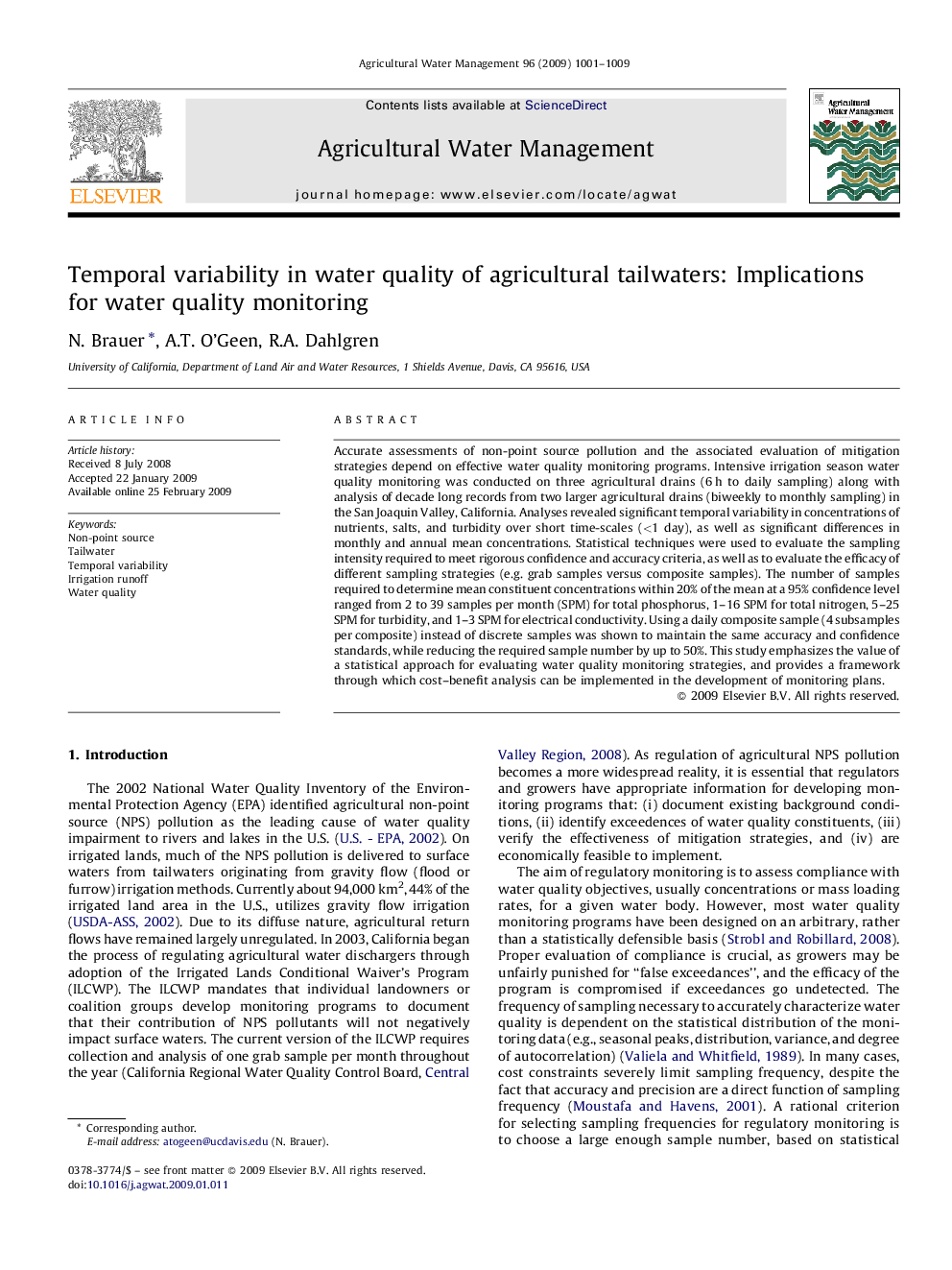| Article ID | Journal | Published Year | Pages | File Type |
|---|---|---|---|---|
| 4480118 | Agricultural Water Management | 2009 | 9 Pages |
Accurate assessments of non-point source pollution and the associated evaluation of mitigation strategies depend on effective water quality monitoring programs. Intensive irrigation season water quality monitoring was conducted on three agricultural drains (6 h to daily sampling) along with analysis of decade long records from two larger agricultural drains (biweekly to monthly sampling) in the San Joaquin Valley, California. Analyses revealed significant temporal variability in concentrations of nutrients, salts, and turbidity over short time-scales (<1 day), as well as significant differences in monthly and annual mean concentrations. Statistical techniques were used to evaluate the sampling intensity required to meet rigorous confidence and accuracy criteria, as well as to evaluate the efficacy of different sampling strategies (e.g. grab samples versus composite samples). The number of samples required to determine mean constituent concentrations within 20% of the mean at a 95% confidence level ranged from 2 to 39 samples per month (SPM) for total phosphorus, 1–16 SPM for total nitrogen, 5–25 SPM for turbidity, and 1–3 SPM for electrical conductivity. Using a daily composite sample (4 subsamples per composite) instead of discrete samples was shown to maintain the same accuracy and confidence standards, while reducing the required sample number by up to 50%. This study emphasizes the value of a statistical approach for evaluating water quality monitoring strategies, and provides a framework through which cost–benefit analysis can be implemented in the development of monitoring plans.
